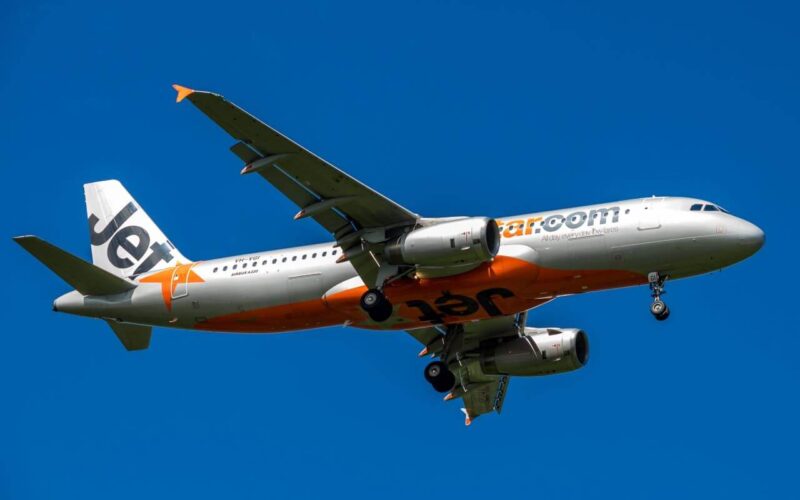Two Jetstar Airways pilots have found themselves under the spotlight after the Australian Transport Safety Bureau (ATSB) released new information regarding an incident on a domestic flight involving an Airbus A320. The flight was forced to abandon two landing approaches after the flight crew failed to follow procedure, leaving the landing gear in the wrong position when conducting a go-around. Distraction in the cockpit has been cited as a factor in the pilots’ failure to lower the landing gear on approach to a domestic airport.
On the morning of May 18, 2018, Jetstar Airways was operating a domestic flight on an Airbus A320-200 (registration VH-VQK); having departed from Sydney (SYD) it was headed for Ballina Byron Gateway Airport (BNK) in northern New South Wales, Australia. The seemingly uneventful flight encountered a disturbing setback in the final minutes of the journey.
According to information released by the ATSB on December 10, 2019, on the first attempt to land at the Ballina airport, the captain found the plane’s airspeed and altitude were higher than normal for a visual approach and ordered the first officer to abort the landing.
The crew then attempted a second approach when an alarm sounded, warning that the landing gear was not lowered. The flight crew were forced to perform a second go-around and finally landed safely only on the third attempt.
“The flight crew conducted a go-around on the first approach at Ballina because the aircraft’s flight path did not meet the operator’s stabilized approach criteria,” the ATSB states in its final safety report. “On the second approach, at about 700 ft radio altitude, a master warning was triggered because the landing gear had not been selected DOWN.”
The flight crew of an Airbus A320 received a landing gear not down master warning while on approach to land at Ballina Byron Gateway Airport due to an incorrect aircraft configuration following a go-around.https://t.co/Ith6czCxCm pic.twitter.com/TU1edVRRhT
— ATSB (@atsbinfo) December 10, 2019
According to the agency, the flight crew failed to lower the landing gear because they were likely distracted by trying to rectify the first botched landing attempt.
The ATSB found that the flight crew “did not follow the operator’s standard procedures during the first go-around”, which resulted in the aircraft’s flaps remaining at Flaps 3 rather than Flaps 1 during the subsequent visual circuit at 1,500 feet (457 meters).
“This created a series of distractions leading to a non-standard aircraft configuration for a visual circuit. Limited use of available aircraft automation added to the flight crew’s workload,” the agency noted.
Furthermore, “Following both go-arounds, the captain elected to conduct non-standard right circuits. This increased the potential for traffic conflicts with other aircraft, and flight crew workload managing such conflicts,” the report reads.
The safety report makes it clear that its findings should not be assumed as apportioning blame or liability. The ATSB maintains that in incidents such as these – an incorrect configuration of an aircraft following a go-around – are rarely the result of a single action or event, but instead, a “number of factors” such as distraction and limited use of aircraft automation that combine to result in an undesirable outcome.
According to Stuart Godley, Director Transport Safety at ATSB, this incident exemplifies how unexpected events during approach and landing phases can substantially increase what is already a high workload period.
“This occurrence highlights the importance of adherence to standard operating procedures and correctly monitoring the aircraft’s approach and parameters to provide assurance a visual approach can be safely completed,” Godley was quoted as saying by Australian news agency 9News.
“Following standard procedures mitigates the risk of the selection of inappropriate auto-flight modes, unexpected developments, or confusion about roles or procedures that can contribute to decisions and actions that increase the safety risk to the aircraft and its passengers,” he added.

